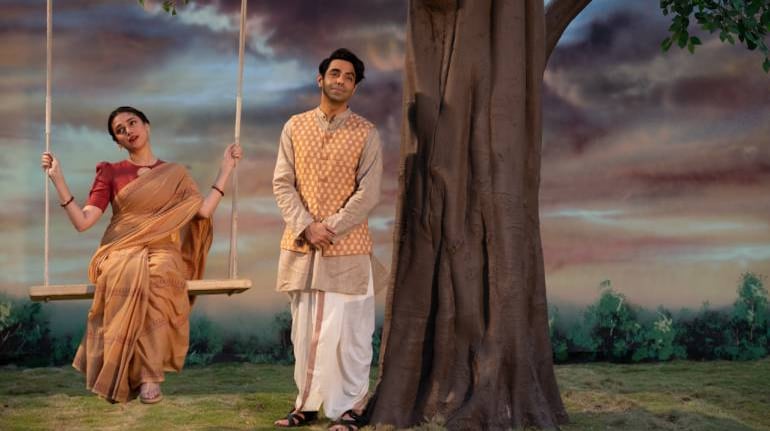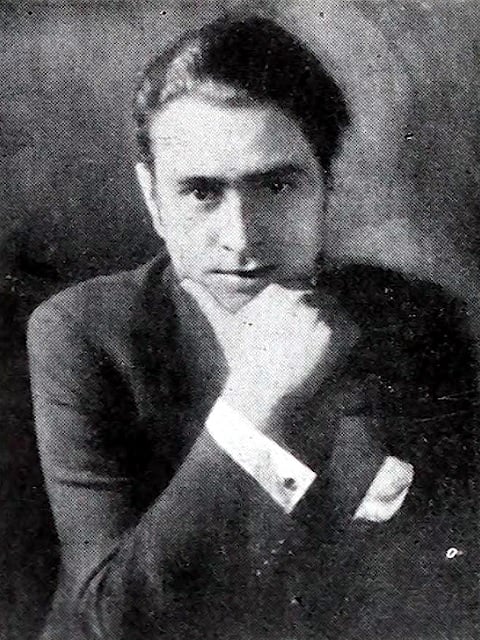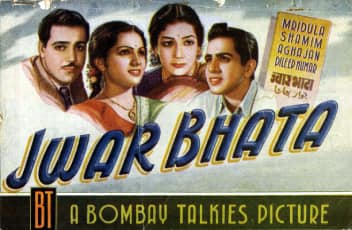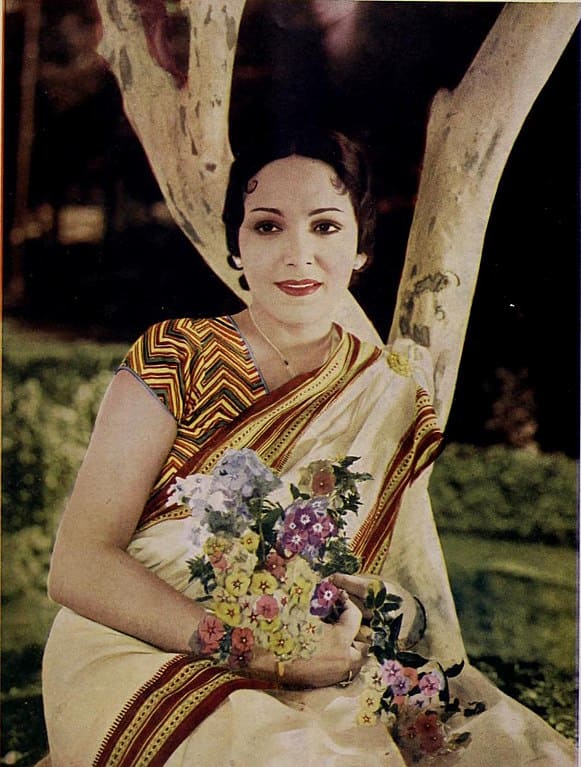



Amazon Prime Video’s Jubilee dropped its second part this weekend. The 10-episode show, in an homage to old Hindi cinema tradition, divided its narrative into two halves with an intermission at the end of the fifth episode. The first five episodes of Jubilee dropped on the Easter weekend and the concluding five on April 14, 2023.
Is Jubilee series based on true story?In its nearly 10-hour narrative Jubilee doffs its hat to several moments in Hindi cinema that shaped the industry as we know it today. For a generation that takes moving pictures for granted – indeed you are likely scrolling through Reels on your other phone even as you read this – Jubilee is a reminder of a time when it took a village to create a single shot.
Jubilee is set in the months preceding Independence and the decade that followed – the late '40s and '50s. However, the real-life story from which it takes inspiration, goes back to a decade before that.
 Himanshu Rai in 1925 (via Wikimedia Commons)The real people on whom Jubilee is based
Himanshu Rai in 1925 (via Wikimedia Commons)The real people on whom Jubilee is basedAll the legal disclaimers before each episode notwithstanding, Jubilee drops several hints that reveal its source of inspiration.
The story involving Shrikant Roy, Sumitra Kumari, Jamshed Khan, and Madan Kumar, is a hat-tip to an episode in the 1930s. Shrikant Roy harks back to Himanshu Rai, by all estimates, the first superstar producer who ran his empire from the lush environs of his studio in the distant Bombay suburb of Malad. Indeed, the suburb itself receives a mention in one of the scenes – watch out for the one where Sidhant Gupta’s Jay Khanna is unceremoniously thrown out of the studio premises.
Roy’s wife Sumitra Kumari harks back to Himanshu Rai’s wife and business partner, Devika Rani. And Jamshed Khan could very well have been modelled on the real life Najam-Ul-Hasan (different spellings of his names include Najam-Ul-Hussain, Najmul Hasan, etc.).
Ultimately, the biggest star of the show and of the films-within-the-film is Madan Kumar. He, too, is based on a real person – by all accounts the first real superstar of the Hindi film industry.
Who was Himanshu Rai, the inspiration behind Jubilee’s Shrikant Roy?The Himanshu Rai Wikipedia page will likely tell you he was a movie star and a producer. What it may fail to do is to articulate just how visionary Rai was.
Rai founded Bombay Talkies – a studio so legendary and ahead of its time in the business that it would take several decades for the rest of the industry to catch up to its thinking and successfully emulate its model.
In 20 short years, Bombay Talkies produced more than three dozen films. Not only were several of these films blockbusters but also industry-shaping and career-defining. Anyone with even a passing knowledge of Indian film history will recognize names such as Achhut Kanya, Kismet, Jwar Bhata, Ziddi, etc.
Bombay Talkies also launched the careers of women and men we now know as legends – Ashok Kumar started his career here, Madhubala got her first break with Basant, Jwar Bhata saw the birth of Dilip Kumar, and Ziddi starred a man who until then only a handful of people had heard about, one Dev Anand.
As you may have well guessed, Shrikant Roy’s Roy Talkies is inspired from Bombay Talkies.
 (Poster via Wikimedia Commons)Bombay Talkies: India’s first corporate film studio
(Poster via Wikimedia Commons)Bombay Talkies: India’s first corporate film studioThe Romantics on Netflix narrated the history of Yashraj Films, the film production company that transformed itself into a studio. Chopra was only two when Bombay Talkies was founded in 1934.
At the time, and for a greater part of its history, the Indian film industry remained a largely unorganised sector. Someone who had some money and was interested in entertaining the masses would invest their savings and make a film. If that film worked, the next one would be made, and then another till such a time that a resounding flop would break the backs of the producers and the production house would shut shop. All it would take was one bad film.
Bombay Talkies was different. It was no fly-by-night operation. Himanshu Rai, an aristocratic Bengali, was educated and articulate. He studied at Santiniketan, studied law in Calcutta before going to London to become a barrister.
It was there that he met one Niranjan Pal, a fellow Bengali, and a director of silent films. This association set him on the showbiz path. He acted in and directed a few films before he met on the sets of his third film, Prapancha Pash, the woman who he would eventually marry.
Devika Rani, quite like Aditi Rao Hydri’s Sumitra Kumari, was an actor and one of the earliest female movie stars in India. Like Sumitra, she was also her husband’s partner in their studio.
Bombay Talkies was so ahead of its time, it was the only movie studio to be listed in the Native Share and Stock Brokers Association, the precursor to the Bombay Stock Exchange. The primary investors in Bombay Talkies included some of the wealthiest Parsis, primary among whom was one Framji Dinshaw on whose land Bombay Talkies stood and flourished.
How Bombay Talkies came to be formed is a story for another day, but it is safe to say that it served as a haven for the creative couple. Being located on the outskirts of the city as it was then, Malad wasn’t just away from the bustle of Bombay but also relatively easily accessible by the local train.
This helped Bombay Talkies flourish away from the trappings of the city life. In several ways, it was a world unto its own. On its sprawling 18-acre campus, not only were movies made, fruits and vegetables were grown too! Shops and other related establishments such as camera and other equipment repair workshops sprung. As was wont, the studio also provided employment to the locals who worked there as gardeners, security personnel, even studio hands. At its peak, Bombay Talkies employed as many as 200 people.
When it got listed, the studio raised Rs 25 lakh, a sum so large that it would give Rai all the fuel he needed to bring his dreams to life. And so when Bombay Talkies started, it was at par with international studios. There were echo-proof stages – a concept that was so alien at the time that Alam Ara, India’s first talkie had to be filmed past midnight because the studio was right next to the railway line – as well as editing rooms, a preview theatre, and film processing laboratories.
Bombay Talkies didn’t just set high technical standards, it also introduced a certain level of professionalism to the business. Everyone was an employee, including actors who would receive fixed salaries. It also took up unconventional, sometimes controversial, topics. Achhut Kanya, which starred Ashok Kumar and Devika Rani was the story of a relationship between an upper caste Brahmin boy and a lower caste ‘untouchable’ girl.
 Devika Rani in Nirmala, in March 1938. (Photo: FilmIndia via Wikimedia Commons)The real-life scandal that inspired Jubilee
Devika Rani in Nirmala, in March 1938. (Photo: FilmIndia via Wikimedia Commons)The real-life scandal that inspired JubileeJubilee begins with Shrikant Roy (played by Prosenjit Chatterjee) packing off his loyal lab assistant Binod Das (Aparshakti Khurana) to Lucknow with explicit orders to bring home his wife Sumitra Kumari and the star of his upcoming movie Jamshed Khan (Nandish Singh Sandhu).
Roy is seemingly less upset that his wife was having an affair with Khan and more concerned with bringing to the studio Jamshed Khan, a theatre actor who he planned to launch as Madan Kumar in his next film.
Women come and go, he tells Das, Jamshed Khan as Madan Kumar was one of his kind.
Das, the quiet faithful servant, sets off to Lucknow but has different things on his mind. As communal riots break out in Lucknow, Khan gets caught in the crossfire and is killed. Das returns empty-handed but presents himself as a viable alternative to Jamshed Khan’s Madan Kumar.
Roy gives up the idea of working with Khan, recognises the fire in Das’ belly and launches the plain-looking man as Madan Kumar.
While a lot of the narrative arc of Jubilee is fictional, the show bases itself on real story. It involves Himanshu Rai, Devika Rani, and Najam-Ul-Hasan.
Hasan, not unlike Jamshed Khan, was a minor actor whom Rai spotted and hired as the face of his upcoming film. That film, Jawani Ki Hawa, got made in a year and was released in 1935. Alongside Hasan, starred Rai’s wife, the stunner, Devika Rani.
Just years ago, Devika had fallen for Rai on the sets of a movie on which they were working. Cupid struck again, although this time standing before Devika was the handsome Najam-Ul-Hasan. And so, while working on their next film Jeevan Naiya, they abandoned the shoot and eloped to Calcutta.
By all estimates, this was Bollywood’s first major scandal. A married movie star eloping with an actor opposite whom she had starred was unusual, to say the least. And so, a distraught Rai dispatched his friend and partner Sashadhar Mukherjee to convince them to return. Mukherjee managed to get them both back to Bombay Talkies but furious at being cheated upon, Himanshu Rai sacked Hasan.
Hasan tried to find work – at first in the movies outside of Bombay Talkies and then in theatre in Calcutta – without much success and eventually moved to Pakistan.
To replace Hasan, Himanshu Rai turned his gaze to his own studio campus and set his eyes on Sashadhar Mukherjee’s nephew. Like Binod Das in the show, Mukherjee’s nephew Kumudlal Ganguly worked as a lab assistant in Bombay Talkies.
Quite like Das, Ganguly was nothing exceptional to look at – certainly no match for the striking Hasan. But that worked perfectly for Rai who didn’t want to tempt fate again and put a handsome man in the same room as his wife.
And so it was that Ganguly replaced Hasan in Jeevan Naiya and took on the name by which we all know him today – Ashok Kumar.
Discover the latest Business News, Sensex, and Nifty updates. Obtain Personal Finance insights, tax queries, and expert opinions on Moneycontrol or download the Moneycontrol App to stay updated!
Find the best of Al News in one place, specially curated for you every weekend.
Stay on top of the latest tech trends and biggest startup news.